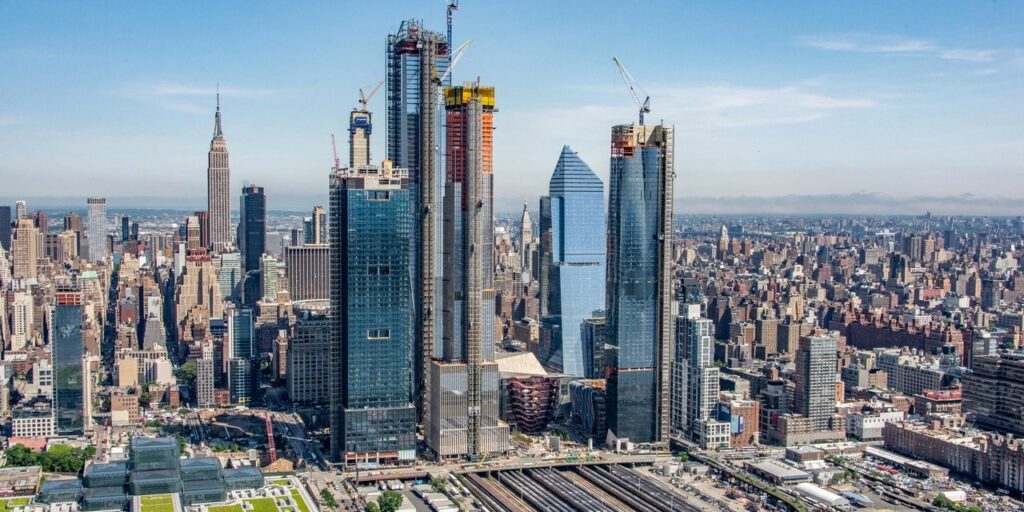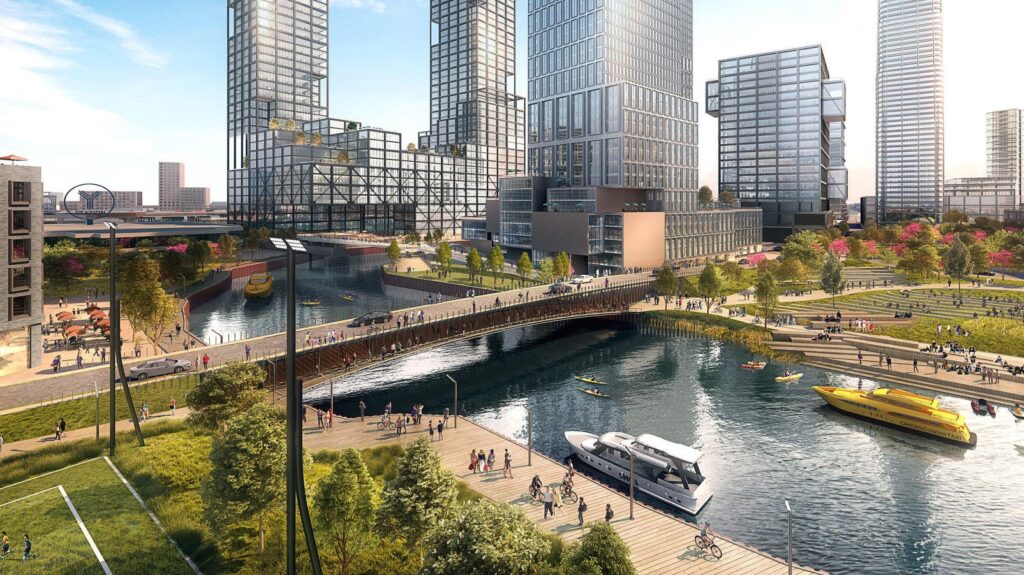The gig economy is alive and well. In fact, this modern online phenomenon has only…
Controversial Spaces and Places: When Art, Advertising and Community Converge
Roughly eighty percent of the US population live in urban areas, but for years, the gritty edges of cities – rail yards, river fronts, and seaports – have been home to artists, next in line for gentrification, neglected by the mainstream. In the past decade that’s rapidly changed, as developers, architects, politicians, and advertisers have swept off the soot, tossed aside the rusted metalworks, and shoveled capital into the fringes of urban centers.
New York’s Hudson Yards, Chicago’s Lincoln Yards, Boston’s Seaport District, or the smaller but no less skyline altering Hudson’s Site in Detroit, offer a glimpse into the most visible, massive-in-scale, transformative urban development projects of our time.
Controversy precedes and continues to chase these projects. In Chicago, New York, and Boston, the sprawling developments are each dubbed a “city within a city,” a term more disdainful than promotional. And size does matter: Hudson Yards is home to a 720,000 square foot shopping zone. Lincoln Yards encompasses a fifty-two acre riverfront development. Hudson’s Site promotes over 1.4 million square feet of mixed-use space. These developments are, to be brief, small cities.

Glossy and extravagant, with high revenue potential and front-facing contact, the sleek malls and condos are a natural habitat for the one percent. Articles in NY Curbed, New York Magazine, and other publications highlight the whiplash of building an Emerald City in the middle of an edgy urban domain, with titles like “Can Megadevelops Serve the Whole City?” and “Hudson Yards is a Billionaire’s Fantasy City.”
How can these new ‘cities’ serve community and culture, rather than existing as exclusive fortresses of the elite?
“The Vessel,” a public space designed by Thomas Heatherwick nestled within Hudson Yards, has yet to win over critics. “Purportedly inspired by ancient Indian stepwells (it’s about as much like them as Skull Mountain at Six Flags Great Adventure is like Chichen Itza) the object—I hesitate to call this a sculpture—is a 150-foot-high, $200 million, latticed, waste-basket-shaped stairway to nowhere, sheathed in a gaudy, copper-cladded steel,” reviewed Michael Kimmelman for the New York Times.

Lincoln Yards offers up planned bicycle paths, a 20,000 seat soccer stadium (an idea now deemed ‘dead’ and replaced with more public park space), acres of riverfront access, and multiple music venues, in addition to retail and residential property. But many Chicago residents see dire consequences for the culture of the City. “Few controversies in Chicago have been more nauseating to watch lately than the Lincoln Yards mega-project, greased up by a compliant City Council,” reported Christine McQueary for the Chicago Tribune.
It is difficult to find complimentary press on either Hudson Yards or the soon-to-be Lincoln Yards, and time will tell if the adage “if you build it they will come” will play out for either of these fantastical cities within cities. As the largest private development project in the country, Hudson Yards has set the bar, and is the bell-weather, for the rest of the US, on how to successfully create a new world within an old city.
The question remains as to whether the Vessel and The Shed (Hudson Yards’ performance venue) are sufficiently alluring and embracing of existing communities to draw limitless crowds. Bike trails and new bars (likely to crush the beloved neighborhood ones) may not be enough for prideful Chicagoans to shift their alliances to something shiny and bright. Marketing teams will need to do their due diligence, working overtime to develop a creative strategy that counteracts the negative media that is churning. Offerings of music, art, and other community-focused happenings will help draw in the public, build a diverse and inclusive community, and knock down the glittering barriers that so often separate these idealistic developments from the cities they’re meant to enhance.




